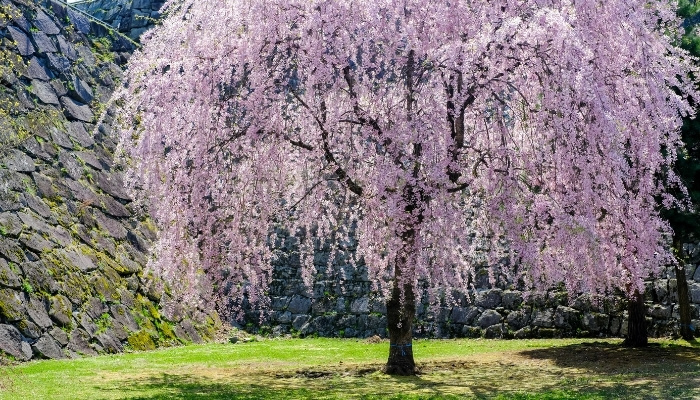Weeping cherry trees are beloved for their graceful, cascading branches and profuse spring blooms Their petite size makes them an ideal focal point in any landscape When shopping for a weeping cherry tree, it’s important to understand the various size options so you can select the right fit for your space.
Typical Mature Heights
Most weeping cherry trees reach mature heights of 15 to 25 feet tall and wide. However, exact dimensions can vary significantly depending on several factors:
-
Cultivar – There are over 100 different cultivars of weeping cherry trees with varying growth habits. Some dwarf cultivars may max out at 6 to 10 feet while larger cultivars can grow up to 30 feet tall.
-
Rootstock – Weeping cherries are grafted onto rootstock which impacts their vigor and ultimate size. More vigorous rootstocks produce larger trees.
-
Growing Conditions – Soil quality, sunlight, climate and pruning practices all affect growth rate and mature size
-
Graft Height – Grafting height, or the point where the weeping scion meets the upright trunk, determines the height of the cascading canopy.
Size Categories
Weeping cherry trees are typically grouped into the following size classes based on their expected mature height:
-
Dwarf – Under 10 feet tall. Best for container growing or small residential landscapes.
-
Semi-dwarf – 10 to 15 feet tall. Ideal for accenting entries, patios, and garden beds.
-
Intermediate – 15 to 20 feet tall. Provides ample cascading flowers without overwhelming.
-
Full-size – 20 to 30 feet tall. Maximizes floral display but requires ample space.
Factors Affecting Growth Rate
Weeping cherry trees grow at a moderate rate of 13 to 24 inches per year. Their growth rate is influenced by:
-
Age – Young trees under 5 years old grow rapidly before slowing down. Growth rate declines with age.
-
Climate – Warm, sunny climates with long growing seasons accelerate growth. Colder climates slow growth.
-
Soil – Rich, moist, well-drained soil enables faster growth. Poor soils stunt development.
-
Pruning – Pruning weeping cherry branches slows growth slightly but yields a fuller, balanced shape.
-
Cultivar – Dwarf and semi-dwarf cultivars grow slower than full-size varieties.
Size Terminology
When shopping for weeping cherries, you may encounter the following terms:
-
Caliper – Trunk diameter measured in inches about 1 foot above soil line. A 1-2 inch caliper represents a 5-10 foot tree.
-
Graft Height – Height along the straight trunk where the weeping canopy begins. Typically 4 to 6 feet.
-
Clearance – Height of the lowest branches from the ground. 5-7 feet allows walking beneath.
-
Spread – Width of the cascading canopy from branch tip to tip. Approximately matches height.
Size Options by Retailer
Weeping cherry trees are sold by reputable online retailers in these common size ranges:
-
Bare Root – 4-6 feet tall with 0.5-1 inch caliper trunks. Only available during dormancy.
-
Container Grown – From 2 feet up to 7-8 feet tall. Smaller sizes ship anytime; larger sizes ship dormant.
-
Balled & Burlapped – Larger trees 6 feet or taller with 1-2 inch caliper trunks. Require professional planting.
Ensure You Pick the Perfect Size
When selecting your weeping cherry tree, be sure to consider your space constraints, planting goals, and growth factors. Aim for a size that fits your garden now but has room to mature. With the right conditions and care, you’ll enjoy elegant cascading blooms for years to come.
Size of Weeping Cherry Tree for Sale Online
The Prunus × yedoensis Shidare-yoshino that we sell online will ship in a greenhouse grade grow pot. Each plant will be appropriately sized for its pot. Please contact us with any specific questions.
What is the botanical name of Weeping Cherry Tree?
Its botanical name is Prunus × yedoensis Shidare-yoshino. Its sometimes referred to as Prunus subhirtella var. pendula
How to grow Snow Fountains® Weeping Cherry – Weeping White Flowering Cherry
- The Ultimate Guide to Growing Strawberries in Raised Beds - August 8, 2025
- No-Dig Garden Beds: The Easiest Way to Grow a Beautiful Garden - August 6, 2025
- How to Protect and Preserve Wood for Raised Garden Beds - August 6, 2025

